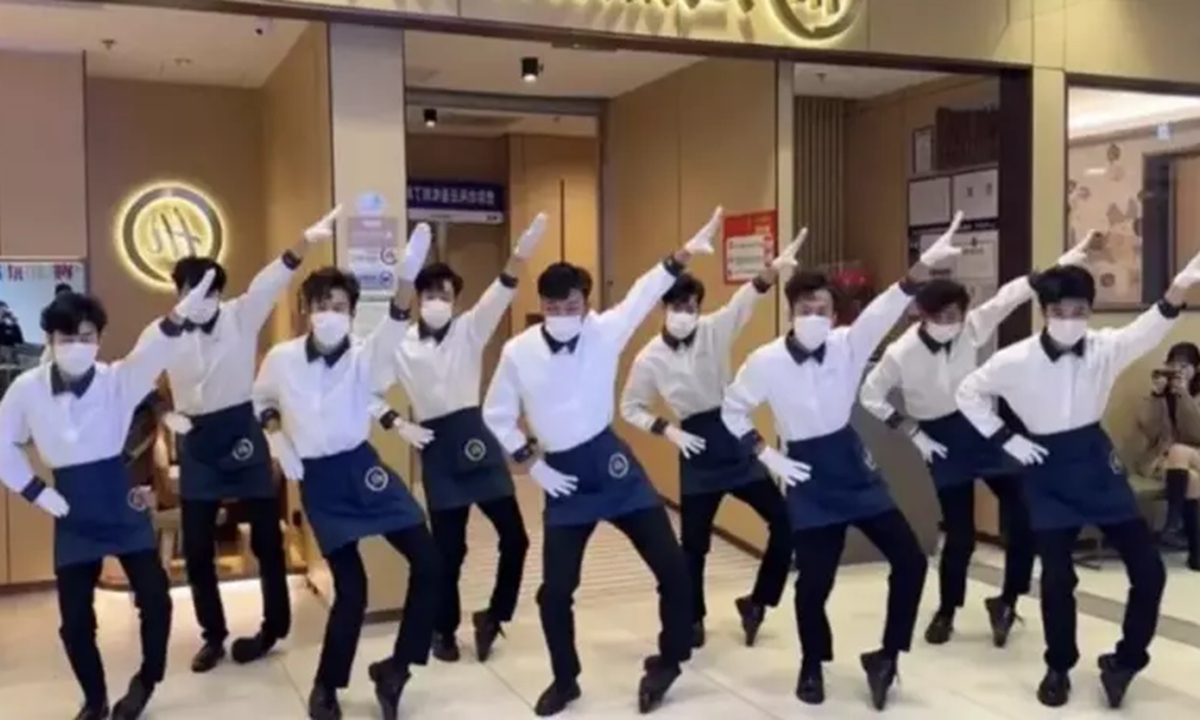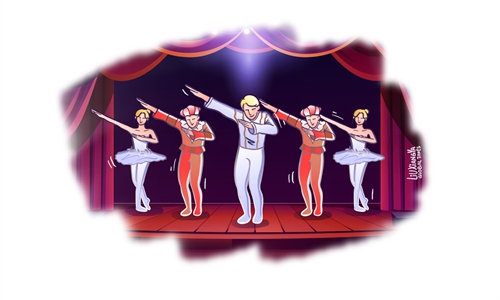ARTS / DANCE
Meme ‘subject three’ dance in Spring Festival Gala – trendy or lazy?

Photo: from online
The inclusion of Kemusan, or "subject three" dance (a popular swag dance originated from South China), into the rehearsal highlights of the 2024 Spring Festival Gala in several provinces has triggered dissatisfaction among some Chinese netizens, who call the move "outdated" and "countrified."
A recent social media poll with 45,000 participants showed that 38,000 voted against the inclusion of the "subject three" dance in the Spring Festival Gala. Some expect the galas to stick to creativity, rather than becoming a "meme replicator."
Despite being considered "vulgar" by some, the "subject three" dance has indeed gained international popularity, becoming a global social symbol. Renowned figures like world finalist professional ballroom dancer Kristina Rihanoff, members of the Russian Royal Ballet, and China's renowned dancer Yang Liping's dancers have all showcased the "subject three" dance.
Even professional dancers have embraced it, raising the question of why it shouldn't be attempted on the Spring Festival Gala stage. The inclusion of "subject three" dance elements doesn't compromise the overall quality of the shows; instead, it might maintain a pursuit of artistic excellence.
The full name of the "subject three" dance is "Guangxi subject three," meaning locals in South China's Guangxi Zhuang Autonomous Region should possess three essential skills: singing folk songs, making rice noodles, and dancing.
Since October, the use of Chinese songs as background music for the "subject three" dance was creatively imitated by short video creators nationwide. In the latter part of November, videos of restaurant staff wearing uniforms and dancing the "subject three" dance became widely popular. According to incomplete statistics, the playback count of "subject three" dance related short videos has reached billions, and it continues to grow in popularity.
The catchy dance centers on performers showing off some swag dance moves, like swinging their knees sideways as they perform a snappy series of hand actions, including fast wrist-twisting moves, accompanied by music that sounds like a mix of Western disco beats and traditional Chinese folk songs.
This dance, with its unique communicative code, has reached a billion-view scale, and the joyful core hidden within it has the potential for broad creative interpretation. Apart from the inherent fun in the dance, its popularity is attributed to meeting the emotional needs of the masses.
China's famed actor Jiang Kun has expressed openness toward incorporating current popular elements into new traditional arts. One of the directors for Henan TV's 2024 Spring Festival Gala, Lu Hongli, has noted that the attention toward the "subject three" dance has prompted reflections on artistic creation. In the eyes of Lu, the "subject three" dance has tapped into an emotional expression point for everyone, with its core concept being that anyone can joyfully dance spontaneously.
In dealing with these internet trends, a more tolerant approach is suggested. Just as traditional art forms, which showcases both highbrow and lowbrow beauty, have become part of everyday life, why shouldn't contemporary trends like the "subject three" dance find a place on a grand stage?
Embracing a bit of "local flavor" in skits, as long as they align with positive social values, might add a unique touch. Producers should be more tolerant and supportive of these internet trends, while also considering constructive feedback from viewers, as everyone's intention is to present better works to the audience.
However, criticism from netizens reveals a desire for more innovation and uniqueness in Spring Festival Gala programs, signaling aesthetic fatigue. Viewers hope for more exciting works on the gala stage, leading with fresh ideas rather than simply replicating internet trends.
The author is a reporter with the Global Times. life@globaltimes.com.cn


